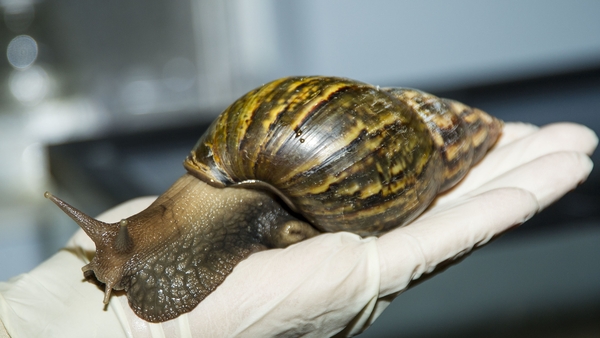Lissachatina fulica,It is also known as the Giant African land snail.It shares the common name "giant African snail" with other species of snails such as Achatina achatina and Archachatina marginata.
If you’ve found yourself in a situation where you accidentally touched a Giant African Snail, you’re probably wondering, “What should I do now?” Giant African Snails (Achatina achatina) are not just fascinating creatures but also known for carrying certain parasites and bacteria that could potentially affect human health. In this article, we’ll guide you through the steps to take if you touch one, ensuring your safety and hygiene.

The Giant African Snail is a species often found in tropical regions. While they are harmless in terms of aggression, they can carry parasites such as Angiostrongylus cantonensis, the rat lungworm. This parasite can cause a serious infection if it enters the human body. Moreover, snails can harbor harmful bacteria or fungi in their mucus, posing a risk of infection. If you’ve touched one of these snails, there are a few essential steps to ensure you remain safe.
If you’ve touched a Giant African Snail, it’s important to act quickly to minimize the risk of infection. Follow these steps:
Wash Your Hands Thoroughly
The first thing you should do is wash your hands immediately. Use soap and clean water, scrubbing between your fingers and under your nails for at least 20 seconds. This helps remove any snail mucus or potential parasites from your skin.
Avoid Touching Your Face
After touching the snail, avoid touching your face, particularly your eyes, mouth, or nose, until you have thoroughly cleaned your hands. This reduces the risk of transferring any harmful microorganisms from your hands to your mucous membranes.
Disinfect Your Hands
If soap and water are not immediately available, use hand sanitizer with at least 60% alcohol content. This is an effective alternative to kill bacteria or parasites that might be on your hands.
Check for Any Cuts or Wounds
If you have any cuts or open wounds on your hands, it’s even more important to clean them properly. The snail’s mucus might enter your body through broken skin, which increases the risk of infection. If necessary, apply an antiseptic.
While touching a Giant African Snail might seem like a harmless activity, it’s important to be aware of the potential risks involved:
Parasites: The most significant concern is the transmission of Angiostrongylus cantonensis (rat lungworm), a parasite that can cause serious neurological issues if ingested. This parasite can be present in the mucus or body of the snail.
Bacterial Infections: Snails can carry harmful bacteria, such as Salmonella, which can cause food poisoning-like symptoms in humans.
Skin Irritations: Some individuals may experience skin irritation or allergic reactions from touching the snail’s mucus.
If you are caring for a Giant African Snail as a pet or studying it, here are a few tips to safely handle the animal:
Wear Gloves: Always wear gloves if you need to handle a Giant African Snail to avoid direct contact with its mucus.
Clean the Snail's Enclosure: Regularly clean the snail’s habitat to minimize the chances of contamination from parasites or harmful bacteria.
Keep the Snail Away from Food: Never handle the snail and then handle food without washing your hands. Cross-contamination is a serious concern.
In summary, touching a Giant African Snail isn’t necessarily dangerous, but it’s important to take precautions. Washing your hands immediately after contact is the most critical step. Disinfect your hands if soap and water aren’t available and avoid touching your face. Be mindful of any cuts or open wounds, and seek medical advice if you feel unwell after coming into contact with the snail.
By following these simple yet effective steps, you can reduce the risk of any health issues from handling Giant African Snails. Stay safe and remember that hygiene is key!
animal tags: giant-african-snails
We created this article in conjunction with AI technology, then made sure it was fact-checked and edited by a Animals Top editor.